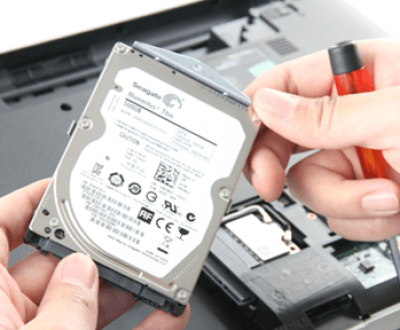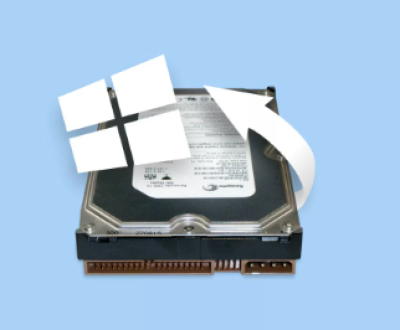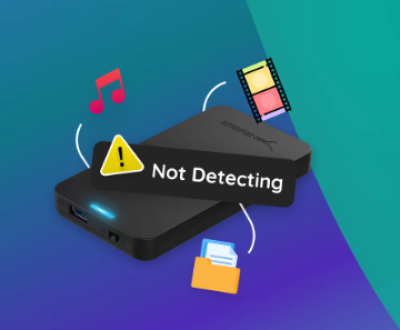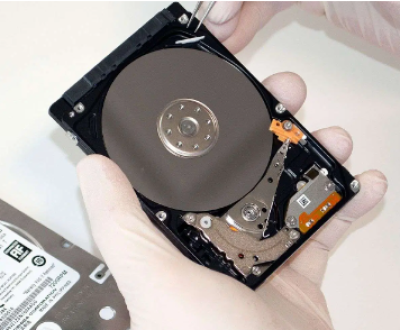To recover data from a crashed hard disk, you will need to employ various methods depending on the severity of the crash and the nature of the problem.
A hard disk crash can be one of the most nerve-wracking experiences, especially if you have important data that you need to recover. Whether the crash is caused by a mechanical failure, corruption of system files, or human error, the goal is always to recover as much data as possible.
Hard Disk Failures
Before diving into data recovery, it’s essential to understand what can cause a hard disk to crash. Generally, crashes can be categorized into two types: physical and logical failures.

1. Physical Failure
Physical failure occurs when the hard drive’s internal components (e.g., the read/write head, motor, or platters) are damaged. This type of failure often results from mechanical wear and tear, electrical surges, or drops. Symptoms of a physically failed hard disk include strange noises (clicking, grinding), failure to spin up, or an unresponsive drive.
2. Logical Failure
Logical failure refers to issues with the data stored on the disk, such as file corruption, damaged file systems, or partition table corruption. This type of failure does not involve any physical damage to the hardware and may be the result of software bugs, improper shutdowns, or malware infections. Logical failure typically leads to inaccessible files or an unbootable operating system.
Step 1: Identifying the Type of Failure
The first step in recovering data from a crashed hard disk is identifying the type of failure. This will help you decide whether you can perform the recovery yourself or if you need professional help.
Signs of Physical Failure:
Clicking, grinding, or whirring noises from the drive
Drive not spinning up or making a buzzing sound
The drive gets very hot to the touch
No response from the drive when plugged in (drive not detected by the operating system)
Signs of Logical Failure:
Files or folders missing or corrupted
“Drive not formatted” error message
The operating system fails to boot
“Bad sectors” or file system errors
If you suspect a physical failure, it’s often safer to stop using the drive immediately and seek professional recovery services. Attempting recovery on a physically damaged drive can worsen the problem and reduce the chances of successful data retrieval.
Step 2: Using Data Recovery Software (For Logical Failures)
Panda Assistant is an advanced data recovery software that offers an efficient and reliable solution for users who need to recover lost, deleted, or corrupted files. Designed to cater to both novice and professional users, Panda Assistant stands out for its simplicity and effectiveness in handling a wide variety of data recovery scenarios. Whether files were accidentally deleted, lost due to a system crash, or damaged by corruption, Panda Assistant makes it possible to restore them with minimal effort.
This software supports an extensive range of file formats, including documents, images, videos, audio files, and more, making it versatile for different recovery needs. With its robust recovery algorithms, Panda Assistant can retrieve data from various types of storage media, including hard drives, USB drives, SD cards, and external storage devices. It is compatible with multiple file systems, such as FAT, NTFS, and exFAT, ensuring that users can recover data from a variety of platforms, whether on Windows or Mac.
One of the key features of Panda Assistant is its intuitive interface, which makes the recovery process accessible to both beginners and more experienced users. The software offers two main scanning modes: a quick scan for faster results and a deep scan for thoroughly searching every sector of the storage device. Users can preview the files before recovery, ensuring that only the necessary files are restored, saving time and space.
Step 3: Creating a Disk Image (For Physical Failures)
If you suspect physical damage to the drive, using data recovery software may not be advisable as it could worsen the damage. Instead, you can create a disk image of the drive, which is an exact copy of the disk’s data. This method allows you to attempt recovery without further risking the physical drive.
Steps for Creating a Disk Image:
Use a tool like DD (Linux) or Clonezilla to create a bit-by-bit copy of the crashed drive.
The disk image can then be mounted and worked on to recover files without making changes to the original damaged drive.
Once the image is created, attempt to recover the data from the image using the data recovery software mentioned above.
Step 4: Using a Data Recovery Service (For Severe Cases)
In cases of severe physical damage, such as a head crash or damaged platters, DIY recovery methods may not be effective. In these instances, it’s best to seek the help of a professional data recovery service. These services are equipped with clean rooms and specialized equipment to safely repair the drive and retrieve the data.
When to Consider Professional Help:
The drive is making strange noises (clicking, grinding, or whirring)
The drive is physically damaged or not spinning up
You’ve already tried DIY methods with no success
Data recovery services can be costly, but they provide the best chance for retrieving data from a severely damaged hard drive.
Step 5: Recovering Data from a Damaged Partition Table
A corrupted partition table can prevent the operating system from recognizing your drive. In such cases, you may be able to use partition recovery tools to rebuild the partition table and recover the data.
Tools to Recover Partition Table:
TestDisk
A free, open-source tool that helps recover lost partitions and rebuilds damaged partition tables.
MiniTool Partition Wizard
A partition manager with a partition recovery feature.
To use these tools:
Install the tool on a working computer.
Run the tool and select the crashed drive.
Follow the prompts to scan and recover the lost partition.
Once the partition is recovered, you can use data recovery software to retrieve your files.
Step 6: Handling Bad Sectors
Bad sectors are areas of the disk that are physically damaged and can cause issues with data recovery. When scanning for files, some recovery software can skip bad sectors, while others may attempt to recover the data from these areas. If you encounter bad sectors during the recovery process, you may need to use specialized tools like HDD Regenerator or Victoria to attempt to repair them.
Step 7: Preventing Future Crashes
While recovering data from a crashed hard disk is possible in many cases, it’s always better to prevent crashes from happening in the first place. Here are some tips to protect your data:
Backup Regularly: Implement a backup strategy that includes both physical (external drives) and cloud-based backups.
Use Surge Protectors: Prevent electrical damage by connecting your computer to a surge protector.
Monitor Drive Health: Use tools like CrystalDiskInfo to check the health of your hard disk regularly.
Avoid Physical Shocks: Handle your hard drive carefully, especially portable drives that are more prone to damage from drops or vibrations.
About us and this blog
Panda Assistant is built on the latest data recovery algorithms, ensuring that no file is too damaged, too lost, or too corrupted to be recovered.
Request a free quote
We believe that data recovery shouldn’t be a daunting task. That’s why we’ve designed Panda Assistant to be as easy to use as it is powerful. With a few clicks, you can initiate a scan, preview recoverable files, and restore your data all within a matter of minutes.
Subscribe to our newsletter!
More from our blog
See all postsRecent Posts
- How to recover data from portable hard drive 2025-07-10
- How to recover data from a broken hard drive 2025-07-10
- How do i recover files from a formatted hard drive 2025-07-10

 Try lt Free
Try lt Free Recovery success rate of up to
Recovery success rate of up to









